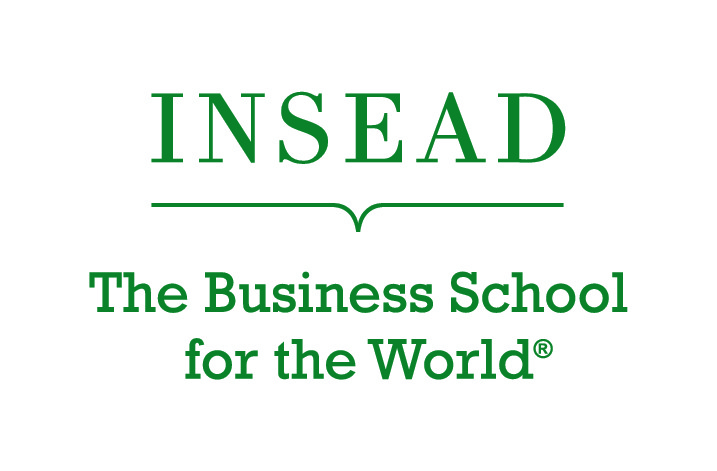- Innovation
Innovation Genes - The 5 key discovery skills
A five-year study by leading professors from INSEAD, Harvard and Brigham Young University have identified five essential competences/abilities required for leading innovation - although as Hal Gregersen of INSEAD notes "you do not need all of the to be great."
The five key discovery skills
1. Associating
Creative entrepreneurs ‘connect the dots’ to make unexpected connections. They combine pieces of what may seem disparate pieces of information until “surprise - you've got this innovative new idea.” Steve Jobs, the CEO of Apple, was interested in calligraphy and this eventually led to his company producing user-friendly, graphics-based Macs. “Several years later, when Jobs was trying to figure out the Macintosh screen, and the 'what you see is what you get' (WYSIWG) sort of image, he connected the dots back to what he had learnt in calligraphy to what might be on the screen and it was a key component of making that whole computer work.”
2. Observing
Some of the most innovative entrepreneurs are “intense observers,” Gregersen says. Take for example Scott Cook, the founder of Intuit: “When we interviewed him, we talked about how he got the initial idea for Quicken software. He watched really carefully in terms of how his wife was very frustrated doing their finances. Manually it was frustrating and irritating. She purchased some software that was equally frustrating and irritating.” It was at that point that Cook thought he might be able to develop a product that could help his wife “solve that problem more effectively.”
After a ‘sneak preview’ of an early Apple computer, Cook got a “rich sense of what it might look like to have a user interface and a mouse and so on, and be able to have things like checks on the screen that looked like what they should be.” And from this observation, Gregersen says, sprang Quicken.
3. Experimenting
When Jeff Bezos, the founder of internet retailer Amazon, was growing up, he used to spend time on his grandfather's farm in the summer. When machinery broke down on the farm, his grandfather would try to fix it himself, with some help from Jeff. They would “experiment, trying this and that, until it would finally work again.” If the animals on the farm got sick, his grandparents wouldn’t call the vet, but rather experiment and try to fix the problem themselves.
“So Jeff grew up with that kind of attitude and mindset, that if I am confronted with a challenge, I can figure out a solution,” Gregersen says. “That kind of experimentation spilled over into Amazon.” At first, the idea had been to sell books via the internet without inventory. “That was the initial idea. We sometimes forget that it took him seven, eight, nine years of experimentation to build the capacity to have warehouses full of books.” As a consequence of his experimentation, Bezos “built this business model that we now call Amazon today.”
4. Questioning
Questions are at the core of what we do. We can be observing the world or experimenting, “but if I have no questions in my mind, I'm pretty unlikely to get any observations or insights or ‘ahas’ that I never saw or thought about,” Gregersen says.
“And this kind of questioning attitude and mentality is just rampant in these folks.” Some may be better than others in observing, but when it comes to questioning, “all were powerful.”
“I'll never forget when I sat down with A.G. Lafley (the former CEO of Procter & Gamble) to talk with him about his world of leadership. I had a series of questions related to research about global leadership and I swear he asked me far more questions in that interview than I asked him because he was just simply curious about what was going on in the research.”
Another was Michael Dell. “I had the naivete to ask Michael if he had any favourite questions he likes to ask when he wanders around the world. And he instantly responded with a quizzical look, like ‘That's a dumb question.’ Then he said : “Hal if I had some favourite questions, everybody would know the answers. Instead, when I'm wandering the world, I try to construct a question for every conversation that might generate information that I never had before’. And for most of these innovative entrepreneurs, that's just how they think."
5. Networking
Typically, when we think of networking, we think of this in terms of jobs, a career or maybe social life. But when it comes to creativity, it takes on a different meaning. “Innovators are intentional about finding diverse people who are just the opposites of who they are, that they talk to, to get ideas that seriously challenge their own,” Gregersen says. Creative and innovative entrepreneurs look for people who are “completely different in terms of perspective” and regularly discuss ideas and options with them “to get divergent viewpoints.” There could be differences in gender, industry, age, country of origin, or even politics. “If I'm on the right, they're on the left, that kind of notion. And those sorts of diverse inputs in terms of conversations enabled them to get new ideas,” he says.
“Now it doesn't come instantly. Sometimes the conversations provide their own insights.” David Neeleman, founder of JetBlue Airways and now CEO of Azul Airlines in Brazil, got the idea for paperless ticketing or e-ticketing, Gregersen says, by talking to one of his employees about the frustration of having to carry around paper tickets in order to give them to passengers flying on their planes. “So that conversation then led to a new idea and a way of doing things differently.”
Read the full piece at: http://knowledge.insead.edu/innovation-innovators-dna-091221.cfm?vid=358
As one of the world’s leading and largest graduate business schools, INSEAD brings together people, cultures and ideas from around the world to change lives and to transform organisations.
ARTICLES YOU MIGHT LIKE
VIEWPOINT
Cognitive neuroscientist, Lynda Shaw, explains how to understand and support intrapreneurs
DEVELOPING LEADERS QUARTERLY MAGAZINE AND WEEKLY BRIEFING EMAILS


































